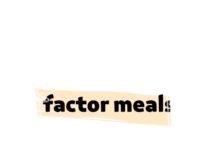Imagine a world where you could safeguard your home, your car, and your loved ones with a single, comprehensive insurance plan – a plan that not only provides unparalleled protection but also offers significant savings. Welcome to the realm of home and auto insurance, where the right coverage can be the difference between financial security and uncertainty.
But where do you even begin? How can you ensure that your home and vehicle are shielded from life’s unexpected twists and turns without breaking the bank? In this article, we’ll dive deep into the world of home and auto insurance, uncovering the key coverage options, exploring the benefits of bundling your policies, and sharing insider tips to help you navigate the insurance landscape with confidence.
Key Takeaways
- Understand the importance of comprehensive home and auto insurance coverage to protect your assets and loved ones.
- Discover the advantages of bundling your home and auto insurance policies to maximize savings.
- Learn how to choose the right coverage limits and work with reputable insurance agents to tailor your policies to your specific needs.
- Explore cost-saving strategies, such as raising deductibles and taking advantage of multi-policy discounts.
- Discover the value of regular policy reviews to ensure your coverage evolves with your changing circumstances.
Understanding Home and Auto Insurance
Home insurance and auto insurance are two essential types of coverage that work together to protect your assets and financial well-being. Home insurance provides coverage for your dwelling, personal belongings, and liability in the event of damages or accidents. Auto insurance, on the other hand, covers your vehicle and protects you from liability in the case of a car accident. Having both home insurance and auto insurance ensures that you’re fully protected against a wide range of risks, from natural disasters to unexpected collisions.
What is Home Insurance?
Home insurance is a policy that covers the structure of your home, your personal possessions, and your legal liability in the event of an accident or disaster. This type of property protection can help you recover financially if your home is damaged or destroyed by a covered event, such as a fire, severe weather, or theft. Home insurance also provides liability coverage, which can help pay for medical expenses and legal fees if someone is injured on your property.
What is Auto Insurance?
Auto insurance is a policy that covers your vehicle and protects you from liability in the case of a car accident. This type of vehicle coverage can help pay for repairs to your car, as well as medical expenses and legal fees if you’re found at fault in an accident. Auto insurance policies typically include several different types of coverage, such as liability, collision, and comprehensive.
Why Do You Need Both?
Having both home insurance and auto insurance is essential for risk management and protecting your financial well-being. Home insurance covers your largest asset, your home, while auto insurance protects your vehicle and shields you from liability in the event of a car accident. Together, these two types of coverage provide comprehensive protection for your property, your vehicle, and your personal liability, ensuring that you’re fully prepared for unexpected events and can focus on what’s most important in life.
Types of Home Insurance Coverage
When it comes to safeguarding your most significant investment – your home – home insurance policies typically include two essential types of coverage: dwelling coverage and personal liability protection. Understanding the specifics of these coverage areas is crucial for ensuring your home and assets are properly protected.
Dwelling Coverage
Dwelling coverage is designed to pay for the repair or replacement of your home’s physical structure in the event of damage. This includes the walls, roof, floors, and other structural components. Whether your home is damaged by a natural disaster, fire, or other covered peril, your dwelling coverage will help cover the costs of restoring your property to its pre-loss condition. This type of home insurance coverage is essential for protecting your property protection.
Personal Liability Protection
In addition to safeguarding your home’s structure, your home insurance policy also provides personal liability protection. This coverage kicks in if someone is injured on your property and decides to file a lawsuit. The liability portion of your policy will cover the associated legal and medical expenses, helping to shield your personal assets from being used to pay for these claims. Personal liability protection is a critical component of comprehensive home insurance coverage.
Types of Auto Insurance Coverage
When it comes to protecting your vehicle, auto insurance plays a crucial role. Automobile insurance policies typically include several distinct types of coverage, each designed to safeguard you and your assets in the event of an accident or unexpected incident. Let’s explore the key types of auto insurance coverage you should consider.
Liability Coverage
Liability coverage is a fundamental component of any auto insurance policy. This coverage pays for damages and injuries to other drivers if you are found to be at fault in an accident. It’s essential to maintain adequate liability coverage limits to protect your personal assets in the event of a costly lawsuit or settlement. Liability coverage helps ensure that you’re financially responsible for the consequences of your actions on the road.
Collision and Comprehensive Coverage
In addition to liability protection, auto insurance policies often include collision coverage and comprehensive coverage. Collision coverage pays for repairs to your vehicle if it’s damaged in a collision with another car or object. Comprehensive coverage, on the other hand, protects your vehicle from other types of damage, such as theft, vandalism, or natural disasters. Choosing the right combination of collision and comprehensive coverage can provide you with the vehicle protection you need.
Uninsured/Underinsured Motorist Coverage
One often-overlooked aspect of auto insurance is uninsured/underinsured motorist coverage. This coverage protects you if you’re involved in an accident with a driver who has insufficient or no insurance. It can help pay for your medical expenses and other costs, ensuring that you’re not left financially responsible for the consequences of someone else’s lack of auto insurance coverage.
By understanding the different types of auto insurance coverage and selecting the appropriate limits, you can create a comprehensive protection plan for your vehicle and financial well-being. Consulting with an experienced insurance agent can help you navigate the options and ensure that your auto insurance coverage aligns with your specific needs and risk profile.
Home and Auto Insurance Bundling Options
Many insurance providers offer the opportunity to bundle your home and auto insurance policies, which can lead to significant policy discounts and streamlined risk management. By insuring both your home and vehicle with the same company, you may be eligible for multi-policy discounts that can lower your overall insurance costs. Bundling your policies can also simplify the management of your insurance coverage, as you’ll have a single point of contact and a consolidated billing process.
When exploring bundled insurance policies, it’s important to compare the available options from multiple providers to ensure you’re getting the best value for your coverage. Some insurers may offer more comprehensive home and auto insurance packages, while others may have more flexible bundling options or specialized discounts. Working closely with a reputable insurance agent can help you navigate the various bundling opportunities and identify the plan that aligns best with your unique needs and budget.
By taking advantage of bundled insurance policies, you can enjoy the convenience of managing your home and auto insurance through a single provider, while also benefiting from policy discounts that can make your overall coverage more affordable. This approach to risk management can provide you with the comprehensive protection you need to safeguard your most valuable assets, all while simplifying the insurance experience.
Factors Affecting Insurance Premiums
When it comes to securing home and auto insurance coverage, the premiums you pay can be influenced by a variety of factors. From your geographic location to your credit score, understanding these key considerations can help you navigate the insurance landscape and find the most suitable policies for your needs.
Location
Your location plays a significant role in determining your insurance premiums. The risk of natural disasters, crime rates, and other regional factors can significantly impact the cost of both home and auto insurance in different areas. Insurers carefully assess the potential for claims in your local market, adjusting their rates accordingly to ensure they can adequately cover the associated risks.
Deductibles
Another important factor that can affect your insurance premiums is the deductible you choose. The deductible is the amount you agree to pay out-of-pocket before your insurance coverage kicks in. Generally, the higher your deductible, the lower your monthly or annual premiums will be. However, it’s crucial to find a deductible level that balances your budget and your risk tolerance, as you’ll need to cover the deductible amount in the event of a claim.
Credit Score
Surprisingly, your credit score can also play a role in determining your insurance premiums. Insurers often use credit-based insurance scores to assess an individual’s likelihood of filing a claim. Individuals with higher credit scores are typically viewed as lower-risk, which can translate to more favorable insurance rates. Maintaining a good credit score can, therefore, be a valuable strategy for managing your insurance costs.
By understanding these key factors that influence insurance premiums, you can make more informed decisions about your coverage and find the right balance between protection and cost. Whether you’re shopping for home, auto, or a bundled policy, staying informed and proactive can help you secure the comprehensive coverage you need at a price that fits your budget.
Tips for Saving on Insurance Costs
When it comes to managing your home and auto insurance costs, there are several savvy strategies you can employ. First and foremost, it’s important to shop around and compare insurance quotes from multiple providers. By exploring your options and finding the best rates, you can maximize your insurance cost savings.
Shop Around
Don’t settle for the first insurance quote you receive. Invest time in researching and comparing offers from various insurance companies. This can help you uncover significant differences in premiums and coverage options, allowing you to make an informed decision that aligns with your budget and needs.
Bundle Policies
Another effective way to save on insurance costs is to bundle your home and auto policies with the same provider. Many insurers offer attractive discounts for customers who insure both their home and vehicle through the same company. Bundling your policies can lead to substantial policy discounts and streamline the management of your coverage.
Raise Deductibles
Increasing your insurance deductibles, the amount you pay out-of-pocket before your coverage kicks in, can also help lower your insurance cost savings. By taking on a higher financial responsibility in the event of a claim, you can enjoy reduced insurance premiums. However, it’s important to ensure that your deductibles remain manageable and align with your ability to cover unexpected expenses.
By implementing these shopping for insurance and bundling policies strategies, you can effectively reduce your home and auto insurance costs without compromising the level of protection you need to safeguard your assets and loved ones.

Choosing the Right Coverage Limits
When selecting your home and auto insurance coverage, it’s crucial to choose the appropriate insurance coverage limits to protect your assets and financial well-being. For your home insurance policy, you’ll want to ensure that your dwelling coverage is sufficient to cover the full replacement cost of your home. This means your coverage limits should align with the current value of your property, accounting for factors like construction costs and any recent renovations or additions.
For your auto insurance, liability coverage limits should be high enough to protect your personal assets in the event of an accident. Liability coverage pays for damages and injuries to other drivers if you’re found at fault, so it’s important to have limits that adequately cover your asset protection needs. Working closely with an experienced insurance agent can help you determine the right coverage limits based on your specific needs and risk management profile.
| Coverage Limit Recommendations | Home Insurance | Auto Insurance |
|---|---|---|
| Dwelling/Liability | Replacement cost of your home | Minimum of $100,000/$300,000 |
| Personal Belongings | 50-70% of your dwelling coverage | N/A |
| Medical Payments | $1,000-$5,000 per person | $5,000-$10,000 per person |
| Deductible | $500-$2,500 | $500-$1,000 |
By working closely with your insurance agent to determine the appropriate insurance coverage limits, you can ensure that your home, vehicle, and personal assets are protected in the event of unexpected accidents or disasters. This proactive approach to risk management can provide you with peace of mind and financial security.
Filing an Insurance Claim
When the unexpected happens and you need to file an insurance claim, understanding the proper steps can help ensure a smooth and successful process. Whether you’re dealing with a home or auto insurance claim, the key is to gather the necessary
documentation
and follow the
claim process
outlined by your insurance provider.
Documentation
The first step in filing an insurance claim is to collect all relevant documentation. This includes repair estimates, receipts, and detailed photos or videos of the damage. Having this information readily available will help streamline the claim process and ensure that your insurer has a comprehensive understanding of the situation.
Claim Process
Once you’ve gathered the necessary documentation, you’ll need to initiate the claim process with your insurance provider. This may involve filing a report, submitting the required information, and working collaboratively with your insurer to resolve the claim. Your insurance agent can guide you through the specific steps and requirements, ensuring that your asset protection is prioritized throughout the process.
By familiarizing yourself with the filing insurance claims and claim documentation procedures, you can navigate the claim process with confidence and ensure that your home and auto insurance coverage provides the protection you need when you need it most.
Importance of Regular Policy Reviews
To ensure that your insurance policy reviews and coverage remain up-to-date and adequate, it’s crucial to periodically review your home and auto insurance policies. Over time, your life circumstances and asset values may change, requiring you to adjust your coverage limits or explore new bundling options. By regularly reviewing your policies, you can identify any gaps in risk management and make the necessary adjustments to keep your home, vehicle, and loved ones protected.
Staying on top of policy changes is essential, as it allows you to proactively address evolving needs and ensure that your coverage continues to meet your family’s requirements. Whether it’s updates to your property value, additions to your household, or changes in your driving habits, regular coverage updates can help you maintain the comprehensive protection you need to safeguard your most valuable assets.
By making insurance policy reviews a routine part of your financial planning, you can gain a deeper understanding of your coverage, identify potential savings opportunities, and make informed decisions about your protection. This proactive approach not only helps you manage risk but also provides peace of mind, knowing that your home and auto insurance policies are tailored to your specific circumstances and needs.

Working with Insurance Agents
When navigating the complexities of home and auto insurance, working with a reputable insurance agent can be an invaluable asset. A knowledgeable agent can guide you through the various coverage options, ensuring you understand the policy details and recommendations that align with your specific needs and risk profile.
Finding a Reputable Agent
The first step in working with an insurance agent is to identify a reputable professional who can provide personalized service and expertise. Look for agents with a proven track record, positive customer reviews, and a deep understanding of the local insurance market. Consulting with friends, family, or online resources can help you find an agent who will advocate for your best interests.
Communicating Needs
Effective communication is essential when working with your insurance agent. Be prepared to clearly articulate your coverage requirements, financial considerations, and any unique circumstances that may impact your insurance needs. By openly discussing your goals and concerns, your agent can provide tailored policy recommendations and ensure your home and auto insurance policies provide the comprehensive protection you require.
Conclusion
In conclusion, home and auto insurance are essential components of a comprehensive risk management strategy. By understanding the different types of coverage, exploring bundling options, and implementing cost-saving strategies, you can protect your home, vehicle, and loved ones with affordable, tailored insurance plans. Regular policy reviews and open communication with a reputable insurance agent can further ensure that your coverage evolves alongside your changing needs and circumstances.
With the right home and auto insurance in place, you can have peace of mind and focus on the things that matter most. By embracing a proactive approach to comprehensive coverage, you can safeguard your assets, manage your risks, and enjoy the freedom to pursue your dreams without the constant worry of unexpected financial burdens.
Remember, the key to effective home and auto insurance lies in staying informed, exploring your options, and working closely with a trusted insurance agent who can provide personalized guidance and support. Invest in the protection you need today, and reap the rewards of a secure financial future for you and your loved ones.
FAQ
What is home insurance?
Home insurance provides coverage for your dwelling, personal belongings, and liability in the event of damages or accidents. It protects your home and assets in case of unexpected events, such as natural disasters, theft, or accidents.
What is auto insurance?
Auto insurance covers your vehicle and protects you from liability in the case of a car accident. It can pay for repairs to your car, as well as any medical expenses or legal fees if you’re found at fault in an accident.
Why do you need both home and auto insurance?
Having both home and auto insurance ensures that you’re fully protected against a wide range of risks, from natural disasters to unexpected collisions. Together, these two types of coverage provide comprehensive protection for your assets and financial well-being.
What types of home insurance coverage are available?
Home insurance typically includes two main types of coverage: dwelling coverage and personal liability protection. Dwelling coverage pays for the repair or replacement of your home’s structure, while personal liability protection covers legal and medical expenses if someone is injured on your property.
What types of auto insurance coverage are available?
Auto insurance policies typically include several different types of coverage, including liability, collision, and comprehensive. Liability coverage pays for damages and injuries to other drivers if you’re found at fault in an accident. Collision coverage pays for repairs to your vehicle if it’s damaged in a collision, while comprehensive coverage protects against other types of damage, such as theft or natural disasters. Uninsured/underinsured motorist coverage is also important, as it can help pay for your medical expenses if you’re involved in an accident with a driver who has insufficient or no insurance.
What are the benefits of bundling home and auto insurance?
By insuring both your home and vehicle with the same insurance company, you may be eligible for multi-policy discounts that can lower your overall insurance costs. Bundling your policies can also simplify the management of your insurance coverage, as you’ll have a single point of contact and a consolidated billing process.
What factors can affect my insurance premiums?
Insurance premiums are influenced by a variety of factors, including your location, deductibles, and credit score. The risk of natural disasters, crime rates, and other geographic considerations can impact home and auto insurance rates in different areas. Your choice of deductible, as well as your credit score, can also affect your premiums.
How can I save on my insurance costs?
There are several strategies you can use to save on your home and auto insurance costs, including shopping around for the best rates, bundling your policies, and raising your deductibles. Working with an experienced insurance agent can also help you find the right coverage at the most affordable price.
How do I choose the right coverage limits for my home and auto insurance?
When selecting your coverage limits, it’s crucial to ensure that your dwelling coverage is sufficient to cover the full replacement cost of your home, and that your liability coverage limits are high enough to protect your personal assets in the event of an accident. Working with an experienced insurance agent can help you determine the appropriate coverage limits based on your specific needs and risk profile.
What should I do if I need to file an insurance claim?
In the event that you need to file an insurance claim, it’s important to gather all necessary documentation, such as repair estimates, receipts, and photos of the damage. You’ll then need to initiate the claim process with your insurance provider, which may involve filing a report, submitting the required information, and working with the insurer to resolve the claim.
Why is it important to review my insurance policies regularly?
To ensure that your home and auto insurance coverage remains up-to-date and adequate, it’s important to review your policies on a regular basis. Over time, your life circumstances and asset values may change, requiring you to adjust your coverage limits or explore new bundling options. By reviewing your policies periodically, you can identify any gaps in coverage and make the necessary adjustments to keep your home, vehicle, and loved ones protected.
How can I find a reputable insurance agent to work with?
When it comes to securing the right home and auto insurance coverage, working with a reputable insurance agent can be incredibly valuable. A knowledgeable agent can help you navigate the various coverage options, understand the policy details, and make recommendations that align with your specific needs and risk profile. Effective communication with your agent is essential, as it allows you to clearly convey your insurance requirements and ensure that your policies provide the comprehensive protection you need.

























































